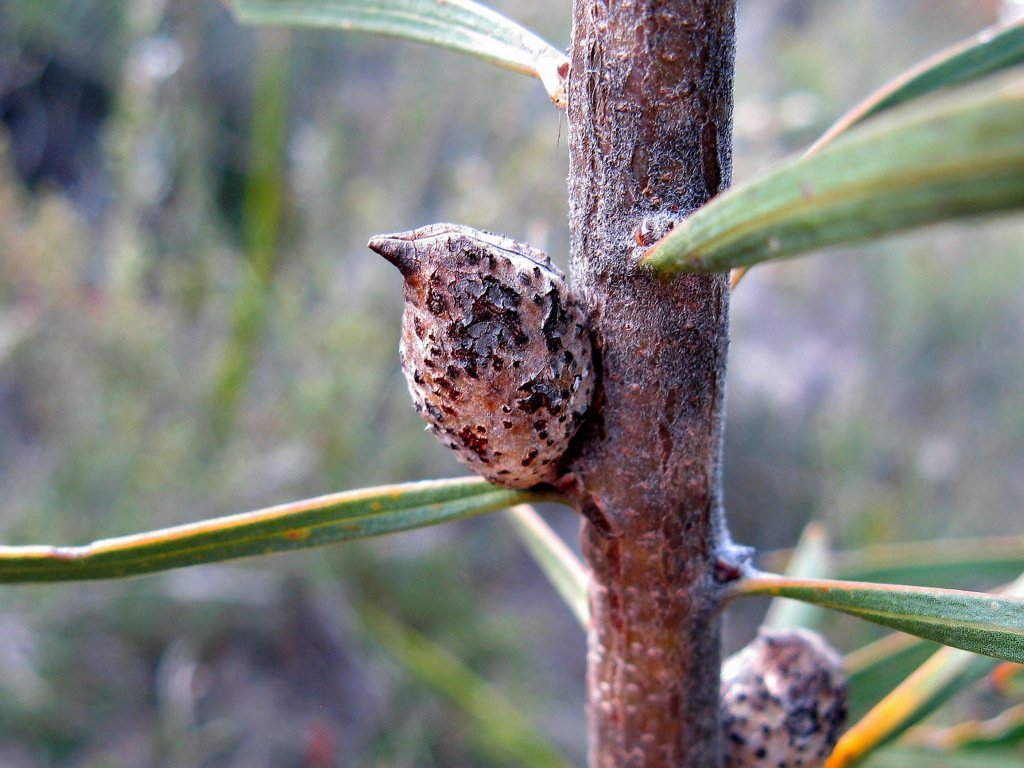Hakea repullulans
H.M.Lee Furze HakeaErect lignotuberous shrub 1.2–4 m high, often suckering; branchlets densely tomentose to glabrescent. Leaves glabrous, twisted through 90° at base, widely spreading and somewhat down-curved, narrowly obovate to linear, 4–14 cm long, 3–12 mm wide; marginal veins prominent; longitudinal veins 3–5(–7), prominent. Inflorescence 10–36-flowered; pedicel glabrous, rarely sparsely pubescent; perianth 1.7–4 mm long, cream-white, glabrous; pistil 4.0–5.7 mm long; pollen presenter conical. Fruit obliquely ovate, 1.5–2.6 cm long, 0.8–1.3 cm wide, slightly curved towards apex, scarcely beaked but shortly apiculate; horns lacking; seed not occupying whole valve face, obliquely narrowly ovate-elliptic, 10–16 mm long, wing extending partly or fully down both sides of body, more broadly on adaxial side, blackish-brown Flowers Sep.–Oct.
LoM, Wim, GleP, Brid, VVP, MuF, GipP, OtP, WaP, Gold, GGr, DunT, WPro, OtR. Also SA. Occurs on sandy acidic soils in heathy open-forests and woodlands, and mallee-heathlands west of Geelong, with disjunct records in Holey Plains State Park and Wilsons Promontory.
Hakea ulicina differs from this species principally in being non-lignotuberous, in the usually much narrower leaves, and the usually fewer, always bisexual, flowers. Hakea repullulans is trioecious with populations having functionally male, female and bisexual plants.
Barker, R.M.; Barker, W.R.; Haegi, L. (1996). Hakea. In: Walsh, N.G.; Entwisle, T.J., Flora of Victoria Vol. 3, Dicotyledons Winteraceae to Myrtaceae, pp. 870–882. Inkata Press, Melbourne.
 Spinning
Spinning

